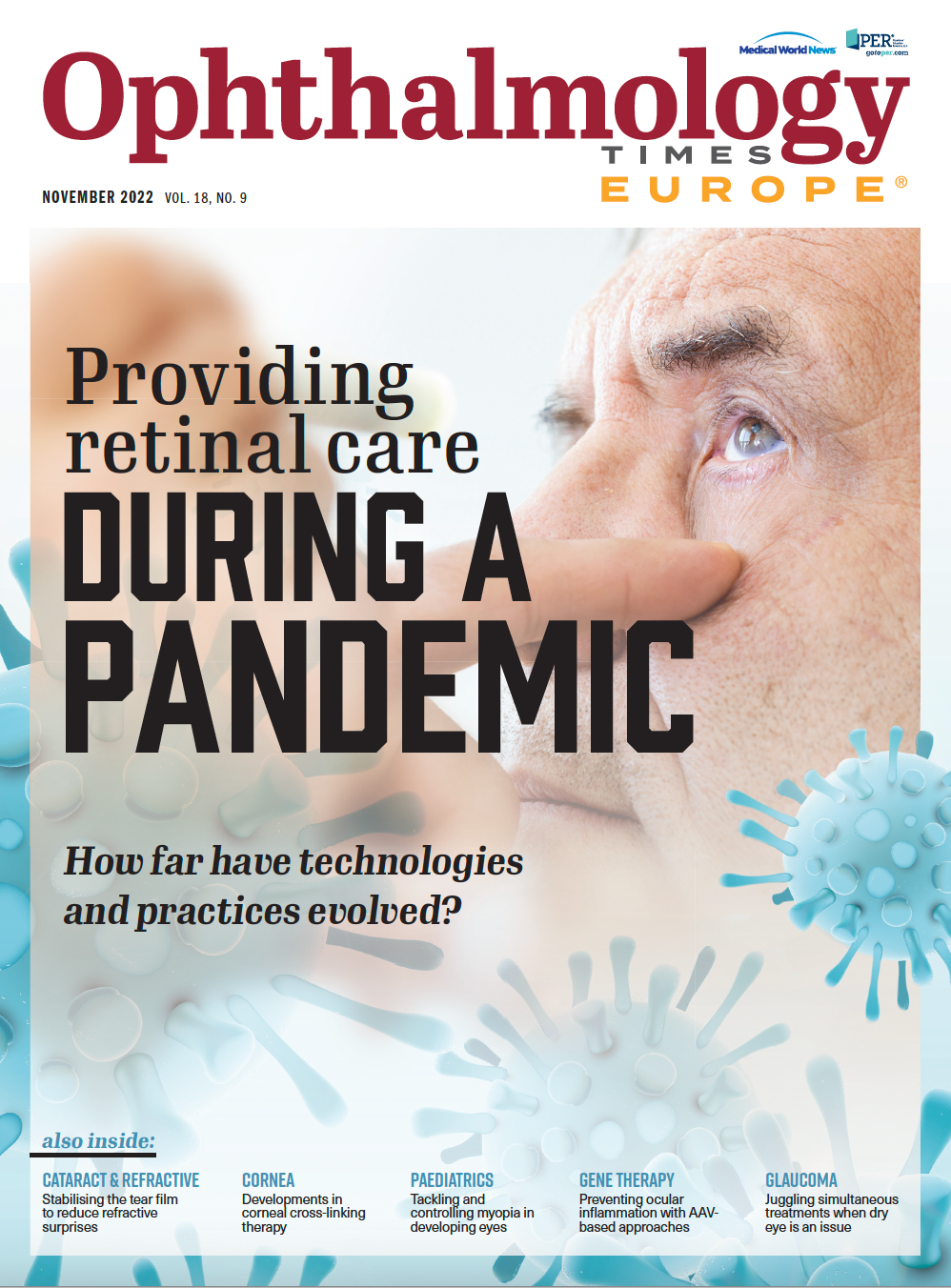Identifying herpes simplex virus keratitis in keratoconus surgery patients
One clinician advises investigating prospective patients for history and evidence suggesting HSV keratitis, and monitoring for post-surgery epithelial defects.
Reviewed by Dr David R. Hardten.

Nothing is perfect. Although corneal collagen cross-linking (CXL) to treat keratoconus is safe and stops the progression of disease, infections can occur. Herpes simplex virus (HSV) keratitis is one possibility, according to Dr David R. Hardten, from the Minnesota Eye Consultants in Minnetonka, Minnesota, United States.
Dr Hardten suggested that most cases of HSV keratitis associated with CXL are recurrences. He addressed the question of what causes HSV keratitis to recur and posited that the traumatic epi (epithelium)-off procedure, use of corticosteroids to reduce haze, and exposure to 30 minutes of ultraviolet light may be the culprits in re-stimulating the virus in patients with prior exposure.
He also noted that with the epi-on procedure, the epithelium is disrupted, which leaves the scene open for an HSV recurrence. “There are a number of different risk factors that can create that environment in which HSV can flourish,” he said.
Clinical plan to prevent HSV keratitis
Although HSV probably cannot be prevented all the time, a few things can be done that may preclude the development of HSV keratitis. The first is to examine the patient for scarring that may be present from a previous infection or from keratitis associated with contact lens wear.
Other options include asking the patient if they have a history of HSV and looking for evidence of previous atopic disease by comparing the two eyes. Dr Hardten stressed the importance of investigating history and looking for evidence of past HSV keratitis.
In patients with a history of disease, Dr Hardten pre-treats the eyes with an oral antiviral agent such as valaciclovir. This is administered three times daily about 1 week before the planned CXL procedure and then postoperatively in a tapering dosage.
“I still perform CXL in these patients,” he said. He estimates the risk in those with recurrent HSV to be similar to that in patients undergoing PRK and recommends performing the procedure because the benefits outweigh the risks. He proceeds by increasing the maintenance dose of the antiviral agent in those patients who had a previous infection.
The most important thing to watch for, Dr Hardten noted, is a postoperative persistent or enlarging epithelial defect. These defects are characterised by the presence of geographic ulcers that have a broader base than the typical narrower dendrites one would see with HSV in patients not taking corticosteroids.
The risks associated with administering an antiviral agent to these patients are very low, he commented. Nevertheless, Dr Hardten advised physicians to proceed with caution. “I think that CXL is relatively safe,” he explained. “However, there are some potential complications.”
Dr Hardten concluded, “Consider increasing the maintenance dose if patients are already receiving maintenance antiviral therapy. Prophylaxis therapy is appropriate if you are suspicious. Be wary of epithelial defects; if they are slow to close, consider geographic ulcers. If healing does not occur in 4–5 days, consider that this may be HSV keratitis.”
David R. Hardten, MD
E: drhardten@mneye.com
This article is adapted from Dr Hardten’s presentation at the recent annual meeting of the American Society of Cataract and Refractive Surgery in Washington, DC, United States. He is a consultant to Glaukos.

Newsletter
Get the essential updates shaping the future of pharma manufacturing and compliance—subscribe today to Pharmaceutical Technology and never miss a breakthrough.